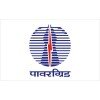Filter interviews by
OPTCL Apprenticeship Trainee Interview Questions and Answers for Experienced
OPTCL Apprenticeship Trainee Interview Experiences for Experienced
2 interviews found
I applied via Walk-in and was interviewed in Jan 2023. There were 3 interview rounds.

(4 Questions)
- Q1. What is transformer ?
- Ans.
A transformer is an electrical device that transfers electrical energy between two or more circuits through electromagnetic induction.
Transformers are used to increase or decrease the voltage of an alternating current (AC) signal.
They consist of two or more coils of wire, known as windings, that are wound around a core made of magnetic material.
The primary winding receives the electrical energy from the input circuit a...
- Q2. How to work 3 phase induction motor?
- Ans.
A 3-phase induction motor works by creating a rotating magnetic field that interacts with the rotor to produce motion.
A 3-phase induction motor requires a 3-phase power supply.
The stator windings create a rotating magnetic field.
The rotating magnetic field induces currents in the rotor, which in turn creates a magnetic field.
The interaction between the stator and rotor magnetic fields produces torque and rotation.
The s...
- Q3. Which principles transformer are work?
- Ans.
The principles that transformers work on
Principle of electromagnetic induction
Principle of mutual induction
Principle of energy conservation
Principle of step-up and step-down voltage transformation
Principle of magnetic flux linkage
- Q4. What are the types of losses in transformer ?
- Ans.
The types of losses in a transformer are copper losses and iron losses.
Copper losses occur due to the resistance of the transformer windings.
Iron losses occur due to the magnetic properties of the transformer core.
Copper losses include both the I^2R losses in the windings and eddy current losses.
Iron losses include hysteresis losses and eddy current losses in the core.
Copper losses can be reduced by using larger conduc...
(1 Question)
- Q1. Tell me about your self ?
- Ans.
I am a motivated individual with a passion for learning and a strong foundation in technical skills, eager to contribute and grow.
Currently pursuing a degree in engineering, where I have developed strong analytical and problem-solving skills.
Completed an internship at XYZ Company, where I assisted in project management and gained hands-on experience in the field.
Active member of the university robotics club, where I co...
Interview Preparation Tips
I applied via Company Website and was interviewed in Apr 2023. There were 3 interview rounds.

Logical reasoning, Numeral system, Algebra, Geometry
Java, python and javaScript
Interview Preparation Tips
Top trending discussions






Interview questions from similar companies

Trainee Interview Questions & Answers
Power Grid Corporation of Indiaposted on 17 Apr 2021
I applied via Other and was interviewed before Apr 2020. There was 1 interview round.
Interview Questionnaire
1 Question
- Q1. Latest Updates on Service Tax/ NPV
- Ans.
Service tax has been replaced by GST since July 2017. NPV is still relevant for investment decisions.
Service tax has been subsumed under GST since July 2017
NPV stands for Net Present Value and is used to evaluate investment decisions
NPV takes into account the time value of money and calculates the present value of future cash flows
NPV is still relevant and widely used in finance and investment analysis
Interview Preparation Tips

Trainee Interview Questions & Answers
Power Grid Corporation of Indiaposted on 18 Dec 2023
I applied via LinkedIn and was interviewed before Dec 2022. There were 3 interview rounds.

(1 Question)
- Q1. Basics questions like tell me about yourself
(1 Question)
- Q1. Related to core subjects

Trainee Interview Questions & Answers
Nuclear Power Corporation of Indiaposted on 15 Jun 2024
I applied via Company Website and was interviewed in May 2024. There was 1 interview round.
(2 Questions)
- Q1. Rankine process
- Q2. Heat engines, types of pump, refrigeration cycle, distillation column design, turbines
Interview Preparation Tips

Apprenticeship Trainee Interview Questions & Answers
Power Grid Corporation of Indiaposted on 22 Feb 2024
(2 Questions)
- Q1. Electrical related like-transformer , circuit breaker,
- Q2. As you wish you can ask
Interview Preparation Tips

Apprenticeship Trainee Interview Questions & Answers
Power Grid Corporation of Indiaposted on 21 Nov 2024
(1 Question)
- Q1. Grade of concrete
- Ans.
Grade of concrete refers to the strength of the concrete mix design.
Grade of concrete is denoted by the ratio of cement, sand, and aggregates in the mix.
Common grades of concrete include M10, M15, M20, M25, etc.
Higher grade of concrete indicates higher strength and durability.
For example, M20 grade concrete has a mix ratio of 1:1.5:3 (cement:sand:aggregate).
Interview Preparation Tips

Assistant Manager Interview Questions & Answers
West Bengal State Electricity Transmission Companyposted on 17 Feb 2022
(3 Questions)
- Q1. Very attractive work culture here is
- Q2. Why are you joining wbsetcl?
- Q3. Tell your name in simple?
Interview Preparation Tips

I applied via Company Website and was interviewed before Aug 2023. There was 1 interview round.
(2 Questions)
- Q1. What year do you study in?
- Ans.
I am currently studying in my third year of university.
Third year of university
Expected graduation year is next year
Taking advanced courses in my major
- Q2. Why did you choose kseb?
- Ans.
I chose KSEB because of its reputation for providing reliable and affordable electricity services.
Reputation for reliability in providing electricity services
Affordable rates compared to other providers
Good customer service
Convenient payment options
Positive reviews from current customers

Software Engineer Interview Questions & Answers
Power Grid Corporation of Indiaposted on 27 Mar 2025
I appeared for an interview in Feb 2025, where I was asked the following questions.
- Q1. What skills do you specialize in?
- Ans.
I specialize in full-stack development, focusing on JavaScript frameworks, cloud computing, and agile methodologies.
Proficient in JavaScript frameworks like React and Angular for building dynamic user interfaces.
Experienced in backend development using Node.js and Express, enabling seamless API integration.
Skilled in cloud services such as AWS and Azure, optimizing application deployment and scalability.
Familiar with a...
- Q2. How many years of experience do you have?
- Q3. What additional qualifications do you possess?
- Q4. In what areas do you have knowledge or expertise?
- Ans.
I have expertise in software development, algorithms, data structures, and web technologies, with a focus on scalable applications.
Proficient in programming languages like Python, Java, and JavaScript.
Experience with web frameworks such as React for front-end and Node.js for back-end development.
Strong understanding of algorithms and data structures, demonstrated through competitive programming.
Familiar with cloud serv...
Interview Preparation Tips
OPTCL Interview FAQs
Tell us how to improve this page.
OPTCL Interviews By Designations
- OPTCL Apprenticeship Trainee Interview Questions
- OPTCL Management Trainee Interview Questions
- OPTCL Diploma Electrical Engineer Interview Questions
- OPTCL Junior Engineer Apprentice Interview Questions
- OPTCL Graduate Apprenticeship Trainee Interview Questions
- OPTCL Deputy General Manager Interview Questions
Interview Questions for Popular Designations
- Senior Engineer Interview Questions
- Design Engineer Interview Questions
- Production Engineer Interview Questions
- Service Engineer Interview Questions
- Mechanical Engineer Interview Questions
- Trainee Interview Questions
- Maintenance Engineer Interview Questions
- Graduate Engineer Interview Questions
- Show more
Overall Interview Experience Rating
based on 2 interview experiences
Difficulty level
Duration
Interview Questions from Similar Companies
OPTCL Apprenticeship Trainee Reviews and Ratings
based on 12 reviews
Rating in categories
|
Assistant Manager
16
salaries
| ₹10.9 L/yr - ₹15 L/yr |
|
Apprentice Trainee
7
salaries
| ₹0.4 L/yr - ₹1.1 L/yr |
|
Junior Manager
6
salaries
| ₹11 L/yr - ₹14.5 L/yr |
|
Management Trainee
5
salaries
| ₹3.8 L/yr - ₹12 L/yr |
|
Deputy Manager
5
salaries
| ₹10.2 L/yr - ₹15 L/yr |

Power Grid Corporation of India

Kerala State Electricity Board

Nuclear Power Corporation of India

West Bengal State Electricity Distribution Company
- Home >
- Interviews >
- OPTCL Interview Questions >
- OPTCL Interview Questions for Experienced














